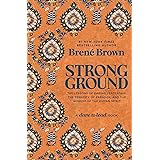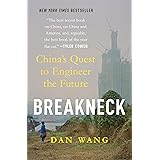Are you wondering if the spectacular rally in gold and silver can truly last? As discussed in the insightful video above, precious metals are indeed scaling fresh peaks. Both international and domestic markets show remarkable strength. Investors, jewelers, and economists watch closely. The question of sustainability remains key for many. We delve deeper into the factors driving this upward trend.
The precious metals market exhibits incredible momentum. Gold and silver continue their impressive climb. This rally captures widespread attention. Many investors seek safe havens. Gold offers a traditional hedge. Silver also presents strong investment appeal. This article explores the details.
1. Gold and Silver’s Unprecedented Ascent
The precious metals market demonstrates robust growth. Gold and silver futures recently hit record highs on MCX. December gold futures touched 1.17 lakh per 10 grams. Silver futures also climbed significantly. They exceeded 1.4 lakh per kg. This surge reflects strong market confidence.
Gold returns have been exceptional. It posted over a 46% return in the last year. Silver’s hike was even sharper. These figures highlight significant investor interest. Both metals act as crucial hedges. They protect against economic instability. This performance underscores their enduring value.
Decoding the Impressive Returns of Gold and Silver
The sustained rally of gold and silver stems from several factors. Strong spot demand fuels price increases. Festive buying in India adds significant pressure. Hopes of Fed rate cuts also boost sentiment. Global uncertainty provides a constant tailwind. Geopolitical tensions encourage safe-haven flows. Trade tariffs against major economies create market instability. All these elements combined push prices higher.
2. Key Drivers Fueling the Precious Metals Rally
Multiple powerful forces drive the current gold and silver surge. These factors combine for a strong market. Understanding them provides crucial insights. Investors can better predict future movements. We examine each significant driver below.
2.1. Robust Spot Demand and Festive Buying
Physical demand for precious metals remains high. This holds true even at record prices. India’s festive and wedding seasons contribute immensely. Consumers purchase gold for traditional reasons. This strong demand creates market premiums. Premiums signal potential supply shocks. Jewelers report consistent buying activity. This indicates a deeply rooted cultural demand.
Tier 2 and Tier 3 cities show significant interest. These regions historically favor physical gold. Their demand will become clearer post-Diwali. Reports from jewelers will provide more clarity. This widespread buying ensures constant market activity. It forms a bedrock of support for gold prices.
2.2. Anticipated Fed Rate Cuts
Expectations of Federal Reserve rate cuts strongly support gold. Lower interest rates decrease the opportunity cost of holding gold. Gold does not offer yield. It becomes more attractive when bond yields fall. The Jackson Hole Symposium often offers clues. Future rate cut expectations provide bullish momentum. These monetary policy shifts are critical.
Analysts anticipate further rate reductions. This outlook bolsters investor confidence. Gold typically thrives in such environments. It moves inversely to interest rates. This dynamic makes gold a favored asset. The prospect of cheaper money often lifts gold prices.
2.3. Persistent Global Uncertainty
Global instability consistently drives safe-haven demand. Geopolitical shocks create market jitters. Trade tariffs, as seen with President Trump’s policies, add uncertainty. Economic data, such as US shutdown threats or jobs reports, also play a role. Investors flock to gold during these times. They seek protection from market volatility. Gold provides a sense of security.
For example, events like the Russia-Ukraine conflict and the Israel-Hamas situation boosted gold. These crises highlight gold’s traditional role. It acts as a reliable store of value. This aspect of gold makes it highly resilient. It often performs well when other assets struggle.
2.4. Institutional Buying: ETFs and Central Banks
Beyond individual consumers, major institutions heavily influence the market. Exchange-Traded Funds (ETFs) see significant inflows. These funds allow easy investment in gold. They attract a broad base of investors. This demand channel adds substantial liquidity.
Central bank buying also plays a crucial role. Many nations diversify their reserves. They accumulate gold as a hedge. This steady buying underpins market strength. Central banks view gold as a reliable asset. Their consistent purchases signal long-term confidence. This widespread institutional support reinforces the rally.
3. Silver’s Moment to Shine: Outperforming Gold
Silver has shown an even sharper hike than gold recently. This performance surprises some investors. For years, gold’s performance was dominant. Now silver steps into the spotlight. Its unique market dynamics contribute to this surge.
3.1. Industrial Demand for Silver
Silver gains significant support from industrial metals. It serves many industrial applications. Copper and zinc have seen breakthroughs. Their recent performance lifts silver as well. Silver is vital in electronics, solar panels, and medical devices. Demand for these products drives silver prices. This industrial utility provides a robust foundation.
The clean energy transition heavily relies on silver. Solar technology, for instance, requires substantial amounts. This growing sector ensures consistent demand. Expanding economies also fuel industrial consumption. Silver’s dual role as an investment and industrial metal gives it an edge.
3.2. The Gold-Silver Ratio Shift
The gold-silver ratio measures how many ounces of silver it takes to buy one ounce of gold. This ratio has fallen significantly. It moved from 110 to almost 81. A falling ratio indicates silver is outperforming gold. This historical shift is noteworthy. It suggests silver’s undervaluation is correcting.
Many analysts see this as a sign of silver’s potential. They believe silver has more room to grow. This trend could continue for some time. Silver’s strong industrial base supports this view. The improving ratio attracts new investors. They seek greater growth potential in silver.
4. India’s Evolving Investment in Gold: Physical vs. Financial
India’s relationship with gold is deeply cultural. However, investment patterns are changing. While physical gold remains popular, financial instruments gain traction. This shift reflects a more modern approach to investment. Indian consumers now have more options.
4.1. Traditional Physical Gold Demand
The demand for physical gold remains strong, especially during key festivals. Diwali and wedding seasons see huge purchases. This tradition provides emotional and social value. Gold jewelers continue to thrive. Demand from smaller cities is particularly significant. These regions often lack extensive financial markets. Physical gold acts as accessible wealth storage.
Despite high prices, premium levels persist. This indicates strong underlying demand. Physical supply often struggles to keep up. This pushes prices even higher. Indian households hold vast quantities of gold. This cultural affinity provides a stable demand base.
4.2. The Rise of Financial Gold Instruments
Indian investors are increasingly exploring financial avenues for gold. Instruments like Gold ETFs and Sovereign Gold Bonds (SGBs) are popular. These options offer several advantages. They provide liquidity and ease of trading. Investors avoid storage and security concerns with physical gold.
SGBs offer an additional benefit: annual interest payments. They also carry a sovereign guarantee. This makes them highly attractive. ETFs allow fractional ownership. They mirror gold price movements. This shift reflects growing financial literacy. It signals a maturing investment landscape. Many Indians now seek efficient investment strategies for gold and silver.
5. Outlook: Will the Gold and Silver Rally Continue?
The analyst view suggests more room for gold and silver to rally. Global concerns continue to fuel this optimistic outlook. Factors like potential US government shutdowns create uncertainty. The jobs rate and interest rate cut expectations remain central. These elements provide ongoing bullish catalysts.
Significant dips are viewed as buying opportunities. The overall sentiment remains firmly on the higher side. Investors should consider gold and silver as key portfolio components. Their role as hedges against inflation and instability is undeniable. The strong fundamentals support continued growth. This sustained interest drives gold and silver forward.
Tracking Your Questions on Precious Metals’ Soaring Performance
What is currently happening with gold and silver prices?
Gold and silver prices are experiencing a significant upward rally, reaching new record highs in both international and domestic markets.
What are the main reasons why gold and silver prices are increasing?
The rally is driven by strong physical demand, expectations of lower interest rates from the Federal Reserve, and ongoing global uncertainty and geopolitical tensions.
Why is silver’s performance particularly noteworthy in this rally?
Silver is showing an even sharper increase than gold, largely due to strong industrial demand for its use in electronics, solar panels, and medical devices.
How can people invest in gold?
People can invest in physical gold, such as jewelry, or through financial instruments like Gold Exchange-Traded Funds (ETFs) and Sovereign Gold Bonds (SGBs).
Is this upward trend for gold and silver expected to continue?
Yes, analysts generally believe that gold and silver have more room to rally, seeing any price dips as potential buying opportunities.











